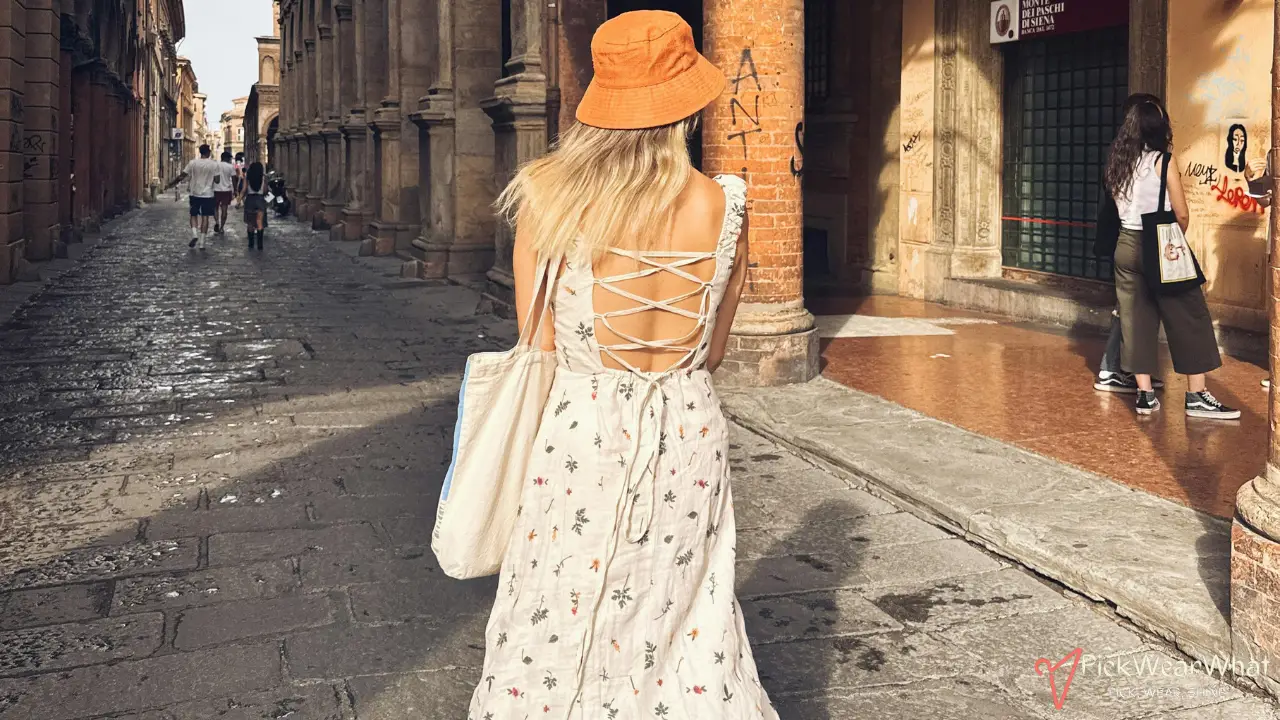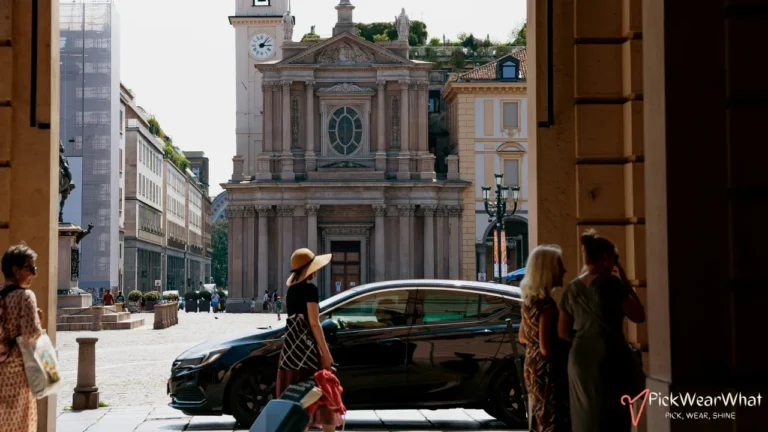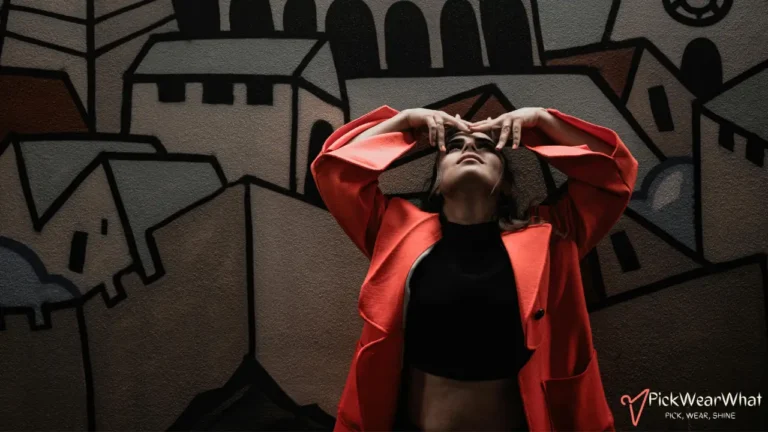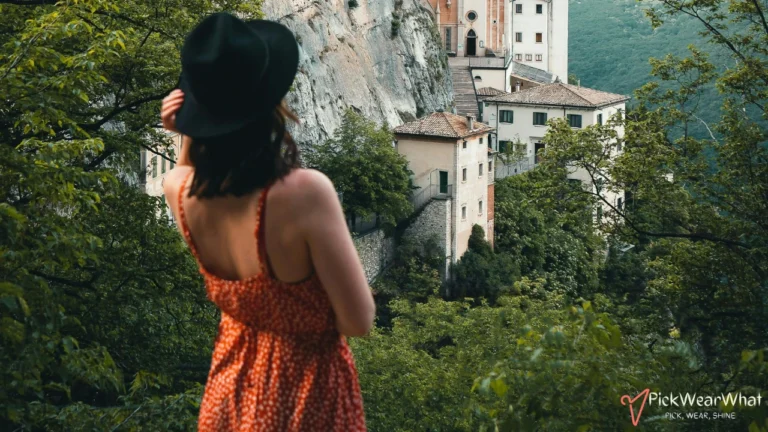In Bologna, winter mornings hover around 0–4 °C and summers climb to 30–33 °C with sticky humidity, so smart layers, breathable natural fabrics, and versatile waterproof pieces keep you comfortable year‑round.
January
A damp chill settles over the city in January, and fog is common. You need true winter gear: insulating layers under a wind‑ and water‑resistant outer shell. Footpaths can be slick, so sturdy soles matter. Men, women, and children should all think warmth first but avoid bulk that makes museum hopping or dining awkward.
| Month | Men: Key Pieces | Women: Key Pieces |
|---|---|---|
| January | Wool overcoat, thermal base layer, merino sweater, lined jeans, waterproof leather boots, beanie, gloves, scarf | Long wool coat, heat‑tech tights under trousers or a midi skirt, cashmere sweater, insulated ankle boots, knit hat, touchscreen gloves, blanket scarf |
| February | Layerable peacoat, flannel shirt, thermal long johns, dark denim, waterproof sneakers/boots, wool cap | Belted wool coat, turtleneck, fleece‑lined leggings, jeans or wool trousers, lug‑sole boots, beret, warm scarf |
| March | Mid‑weight trench, light down vest, long‑sleeve tees, chinos, leather sneakers, compact umbrella | Trench coat, light cardigan, long‑sleeve tops, wide‑leg trousers or midi dresses with tights, loafers, small umbrella |
| April | Unlined blazer, breathable sweater, cotton oxford shirts, water‑resistant jacket, suede sneakers | Light trench or mac, silk scarf, breathable blouses, jeans or midi skirts, low block‑heel boots/sneakers |
| May | Denim jacket or shacket, polo shirts, chinos, loafers, packable rain shell | Cropped jacket, airy blouses, culottes, comfortable flats/sandals (on warm days), light raincoat |
| June | Linen shirt, chino shorts or light trousers, no‑show socks, canvas sneakers, UV sunglasses | Linen dress, breathable blouses, midi skirts/shorts, espadrilles or sandals, sunhat, UV sunnies |
| July | Short‑sleeve linen/cotton shirts, lightweight shorts, moisture‑wicking tees, sandals (evening loafers) | Sleeveless or short‑sleeve dresses, cotton/linen shorts, strappy sandals, light shawl for churches, anti‑chafe shorts |
| August | Similar to July plus a very light shirt for sun protection, open sandals, hat | Breezy maxi or midi dresses, airy tops, sandals, foldable fan, sunhat; light cardigan for AC indoors |
| September | Light bomber or denim jacket, thin sweaters, dark jeans, leather sneakers, scarf for nights | Lightweight cardigan/blazer, transitional dresses, ankle boots or loafers, thin scarf |
| October | Water‑repellent trench, thicker knit, corduroy pants, leather boots, umbrella | Wool‑blend coatigan, knit dresses, opaque tights, Chelsea boots, compact umbrella |
| November | Warm parka or heavy trench, thermal tee, jeans, waterproof boots, knit beanie | Belted wool coat, turtleneck dress or sweater+skirt, fleece tights, waterproof ankle boots, beanie |
| December | Heavy wool coat or puffer, festive sweater, scarf & gloves set, lined boots | Long puffer or cocoon coat, cashmere sweater, velvet or wool skirt with tights, insulated boots, festive scarf |
I always slip a compact umbrella in my backpack this month—Bologna’s arcades help, but that damp wind still sneaks in.
What About Children In January?
A quick note before diving into other months: kids run hot when they play but complain loudly when cold. Thermal tops, fleece hoodies, and waterproof boots keep them happy; add bright hats and gloves so they’re easy to spot in crowded piazzas.
When I travel with my nephew, I keep an extra pair of wool socks in my coat pocket—small, light, and a lifesaver after a puddle mishap.
February
February is still wintry but slightly less bitter. Expect drizzle and overcast skies. Layering remains essential, yet you can start swapping the thickest knits for mid‑weights. Children benefit from removable layers for indoor attractions.
I like pairing a flannel overshirt with a thin down vest—warm outside, easy to shed inside trattorie.
March
March teases spring: days can swing from 6 °C mornings to 15 °C afternoons. Transitional jackets, breathable sweaters, and compact umbrellas shine. Kids can ditch heavy snow boots for waterproof sneakers.
I rely on a packable down vest—scrunches into my daypack and pops out when the wind picks up near Piazza Maggiore.
April
Rain showers become frequent. A trench or light mac that actually repels water is a game‑changer. Men and women alike can dress smarter yet still practical; children need rainproof hoodies and quick‑dry joggers. Add one of the required interlinks here: What To Wear In Florence.
I once underestimated an April squall and spent the afternoon drying socks on a radiator—never again without a real raincoat.
May
May feels properly springlike, often between 12–23 °C. It’s picnic season, so choose outfits that work on grass and café chairs. Breezy fabrics and light knits fit everyone; youngsters love breathable sneakers and caps.
I usually switch to loafers in May—easy to slip off when lounging in Giardini Margherita.
June
Summer heat begins. Linen, cotton, and moisture‑wicking blends are your allies. Men can rotate linen shirts and chino shorts; women may favor flowy dresses. Kids need breathable tees and bucket hats. Sunscreen is non‑negotiable.
I stick a travel‑size sunscreen in my pocket because Bologna’s sun can sneak up on you while sipping spritz in outdoor bars.
July
July is hot and often humid. Think ultra‑light layers, airy cuts, and sandals with good grip. Churches require shoulders and knees covered, so carry a shawl or lightweight pants. Children should wear quick‑dry shorts and UV shirts when playing in fountains.
I always keep a thin cotton scarf in my tote—it doubles as sun cover and church‑appropriate layer.
August
August can be even more sweltering, and parts of the city slow down for Ferragosto holidays. Breathability rules. Men and women should prioritize loose silhouettes. Kids need lightweight outfits and refillable water bottles. Insert the second interlink here: Dressing Guide For Venice.
I learned to carry a foldable fan—it’s old‑school but lifesaving on packed buses.
September
Early September mimics summer; late September leans autumnal. Transitional pieces—light jackets, thin knits—work for all. Kids can layer hoodies over tees. Neutral, mix‑and‑match colors simplify packing.
I love a light bomber this month—looks sharp in photos and keeps the evening breeze off my back.
October
October brings crisp air and colorful leaves. Water‑repellent outerwear and chunkier knits return. Men, women, and children alike need shoes that can handle damp cobblestones. Add thermal layers on colder days.
I rotate in corduroy trousers; they feel seasonal and fend off the chill during late‑night gelato runs.
November
Fog settles again and daylight shortens. Proper coats and waterproof footwear are back in play. Kids should have reflective accents for early nightfall. Scarves become daily staples.
I keep a second pair of gloves handy—one always ends up lost in a café banquette.
December
Festive lights, Christmas markets, and biting cold define December. Puffer coats or heavy wool, thermal underlayers, and insulated boots suit everyone. Children may need snow‑style mittens if you visit hill towns nearby.
I pull out my coziest cashmere sweater for evening strolls under the porticoes—warmth and a little holiday flair.
What To Wear In Bologna In Spring?
Spring (March–May) swings between brisk breezes and warm afternoons, so adaptable layers are key. Men benefit from trench coats and light knits; women from versatile dresses with tights that can be peeled off; children from hoodies and waterproof sneakers.
| Season | Men | Women |
| Spring | Trench or light mac, breathable sweaters, chinos, leather sneakers, compact umbrella | Light trench, cardigans, midi dresses/culottes, loafers or ankle boots, silk scarf |
I love strolling through university courtyards in a light blazer—polished yet comfortable when the sun peeks out.
What To Wear In Bologna In Summer?
Summer (June–August) stays hot and humid. Breathable, loose, and sun‑protective clothing rules. Men go for linen shirts and shorts; women for airy dresses and sandals; kids for UV tees and hats.
| Season | Men | Women |
| Summer | Linen/cotton shirts, lightweight shorts, sandals or breathable sneakers, sunhat, sunglasses | Flowy cotton/linen dresses, breathable tops, sandals, sunhat, light shawl for churches |
I keep sandals with cushioned soles; Bologna’s stone streets punish thin flip‑flops after a day of sightseeing.
What To Wear In Bologna In Autumn?
Autumn (September–November) alternates warm days and chilly, damp nights. Transitional layers—denim jackets, cardigans, water‑repellent trenches—work best. Children need hoodies and rainproof parkas in November.
| Season | Men | Women |
| Autumn | Denim/bomber jackets, thin knits, dark jeans, leather sneakers/boots, foldable umbrella | Cardigans/blazers, knit dresses, ankle boots, opaque tights, compact umbrella |
I enjoy adding a patterned scarf—it elevates simple outfits and doubles as warmth when temperatures dip unexpectedly.
What To Wear In Bologna In Winter?
Winter (December–February) brings damp cold. Insulation plus weather resistance is vital: wool or down outerwear, thermal bases, and waterproof footwear for everyone.
| Season | Men | Women |
| Winter | Heavy wool coat or puffer, merino base layers, lined jeans, waterproof boots, beanie, gloves | Long puffer or wool coat, cashmere sweaters, heat‑tech tights, insulated boots, knit accessories |
I never regret packing merino base layers—they’re warm, breathable, and don’t smell after repeat wears.
How Should You Dress For Bologna’s Churches And Fine Dining Spots?
Cultural sites and upscale restaurants expect a bit of polish. Shoulders and knees covered in churches; smart‑casual works for dining. Introduce kids to this etiquette with simple cardigans or long pants.
I keep a navy blazer handy—it dresses up jeans instantly when a last‑minute dinner reservation pops up.
Which Fabrics And Footwear Handle Bologna’s Humid Heat Best?
Lightweight, breathable natural fibers—linen, cotton, bamboo—fight stickiness. Shoes: leather or canvas sneakers with proper insoles; sandals with arch support. Children should wear breathable mesh sneakers to prevent blisters.
I once tried sightseeing in cheap flip‑flops—my feet still remember the ache. Never again.
Do You Need Rain Gear Despite The Porticoes?
Bologna’s famous porticoes help, but drizzle and downpours catch you between arches. A compact umbrella and thin waterproof shell are worth the bag space.
I clip a mini umbrella to my backpack strap—hands free and always reachable when clouds turn.
Smart Packing Tips: How Many Layers And Shoes Are Enough?
Two outer layers (one rainproof, one insulating), three mid‑layers, and two pairs of shoes (one waterproof/closed, one breathable) usually cover all scenarios. Kids need extra socks and quick‑dry tees due to inevitable spills and splashes.
I swear by packing cubes—one just for accessories like scarves and gloves so I don’t rummage endlessly in the morning chill.
Can You Blend In With Local Style While Staying Practical?
Bolognesi favor understated elegance: neutral palettes, fitted silhouettes, quality fabrics. Add one standout accessory—a scarf, watch, or bag—to feel local while remaining travel‑savvy.
I throw on a slim leather belt and a patterned scarf—small touches that earn nods from stylish locals.
FAQs About What to Wear In Bologna
What Should I Wear In Bologna In January?
Warm coats, thermal layers, waterproof boots; kids need fleece hoodies and gloves.
Is Bologna Hot In July And August?
Yes, highs often hit 30 °C+, so linen, shorts, sundresses, and sunhats are ideal.
Do I Need A Raincoat In Spring?
Showers are common March–May; a trench or packable waterproof jacket is smart.
Can I Wear Shorts In Bologna’s Churches?
No, keep knees and shoulders covered; carry a light wrap or wear longer bottoms.
What Shoes Work Best For Bologna’s Cobblestones?
Cushioned sneakers or lug‑sole boots; avoid thin flip‑flops.
How Should Children Dress In Summer? UV‑protective tees, breathable shorts, hats, and closed‑toe sandals for playgrounds.
Do Locals Wear Bright Colors?
Mostly neutrals, but tasteful pops of color (scarves, bags) are common.
Is A Puffer Or Wool Coat Better In Winter?
Both work; puffer for down warmth, wool for classic style—ensure either is lined and wind‑resistant.
What To Wear For A Bologna Food Tour?
Comfortable walking shoes, layers you can peel off in warm markets, and dark clothes to hide sauce splashes.
Should I Pack Swimwear?
Only if you plan day trips to spas or hotels with pools; Bologna itself isn’t a beach town.
Are Jeans Acceptable Year‑Round?
Yes, but choose lighter, stretch denim in summer and lined or thicker denim in winter.
Do I Need Formalwear? A smart‑casual outfit usually suffices for restaurants; formalwear only for special events.
What Accessories Are Must‑Haves?
Compact umbrella, scarf, sunglasses, hat, and travel‑size sunscreen.
How Do I Dress For Day Trips From Bologna?
Check the microclimate (e.g., hill towns may be cooler). Pack an extra layer and sturdy shoes.
Can I Wear Athletic Gear Sightseeing?
Tasteful athleisure is fine, but avoid gym‑only pieces in elegant venues.
Is Leather Practical In Summer?
Lightweight leather sandals or bags are fine; avoid thick jackets in the heat.
Do Kids Need Special Rain Gear?
Yes—bright, packable raincoats and waterproof shoes make sudden showers manageable.
What To Wear During Bologna’s Christmas Markets?
Heavy coats, thermal accessories, waterproof boots; festive scarves add cheer.
Are Hats Common In Winter?
Absolutely—beanies and berets are both practical and stylish.
Should I Bring An Iron Or Steamer?
A travel steamer helps with linen wrinkles; many rentals provide irons.




